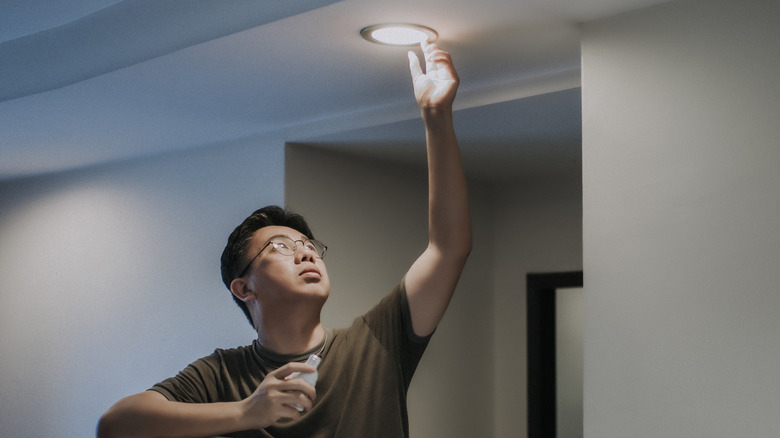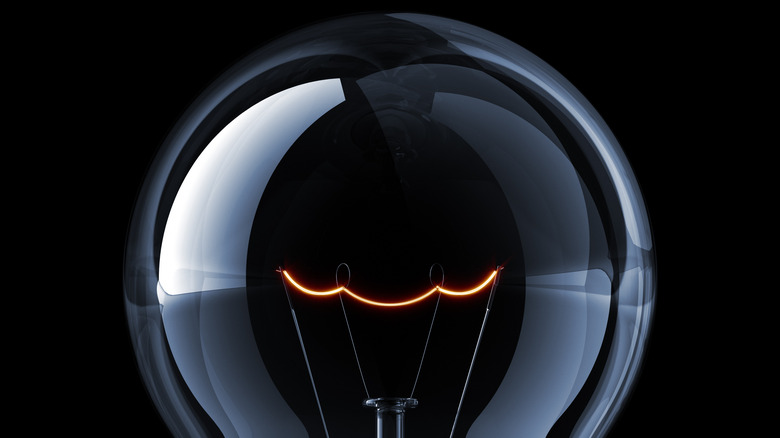What Happens If You Use A Lightbulb With The Wrong Wattage?
People break all sorts of rules as they venture through life, but the one seemingly unbreakable rule that's been seared in our brains since childhood is to never use a lightbulb with the wrong wattage. It's up there alongside running with scissors or waiting an hour to swim after eating. Few of us know why exactly, but using the wrong wattage lightbulb invokes vague nightmares of blowing up the house or creating a quantum singularity that may swallow the Earth.
There are actual problems that can occur when the wrong wattage lightbulb is screwed in. The majority of them, however, tend to occur when we use a lightbulb with a higher wattage than the maximum, not necessarily a lower one. Sockets are generally designed to handle the maximum wattage listed, so screwing in a lower one will only produce even less heat and potentially save a little money on your electricity bill. One that does exceed the power allotment can lead to what's known as overlamping.
The hazards of overlamping
According to Hardcore Electric, overlamping simply occurs when a lightbulb with too much wattage is installed in a socket that can't handle it. This can lead to a number of issues, including the bulb heating up too much and potentially damaging the socket, an electrical fire caused by sparks firing or wires melting, and drawing too much power from the socket and leading to a reduction in energy efficiency.
Fortunately, all of the above scenarios are highly avoidable by simply looking up, as industry standards generally list the maximum wattage on the socket or the base of the electrical fixture, usually after the word "Caution." If for some reason the maximum wattage isn't listed and they're forcing you to wing it (which sometimes is an issue in older homes), 60 watts tends to be the industry standard, and there's no harm in going lower just to be safe. An electrician can always be called in to verify, if necessary, though he or she may chuckle for the reason you're calling.
It's worth noting that this tends to apply to regular incandescent lightbulbs, as opposed to light-emitting diode bulbs (LED) or compact fluorescent lights (CFL). According to technician company John C. Flood, LEDs are directional instead of radiant and, as a result, can use much less energy and even sometimes remain cool to the touch. For their part, CFLs also use a fraction of the electrical power and produce far less heat, so in either case, the risks of overlamping are minimal, though the precautions listed should be followed regardless. What becomes clear is that it doesn't really matter how many people it takes to screw in a lightbulb or inefficiently turn the ladder, as long as the wattage is correct.

